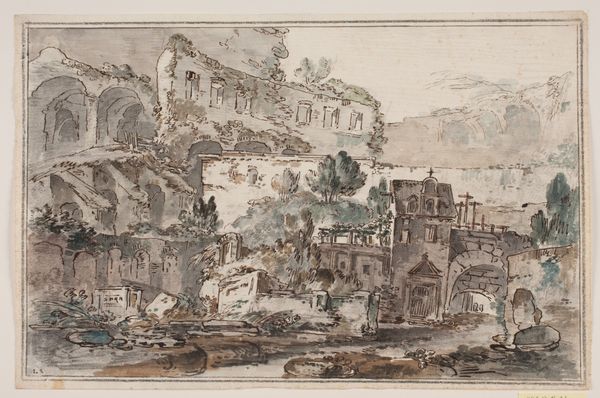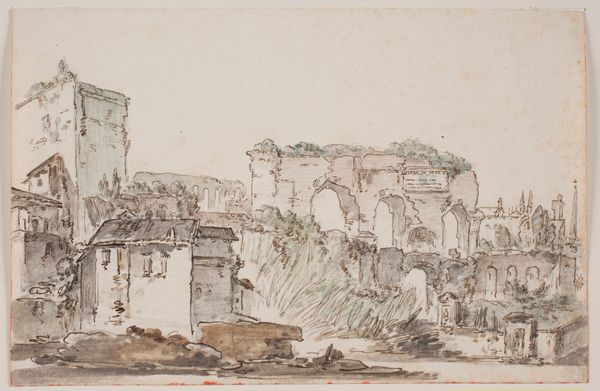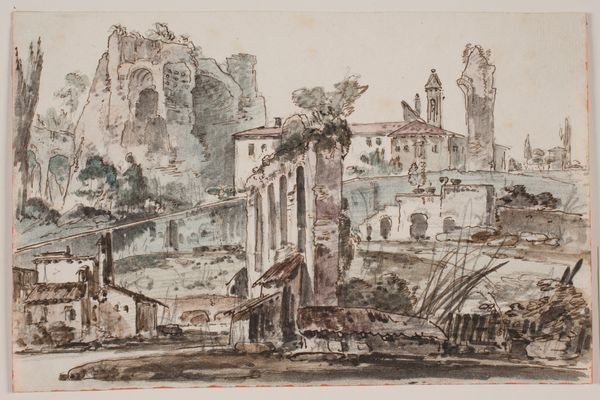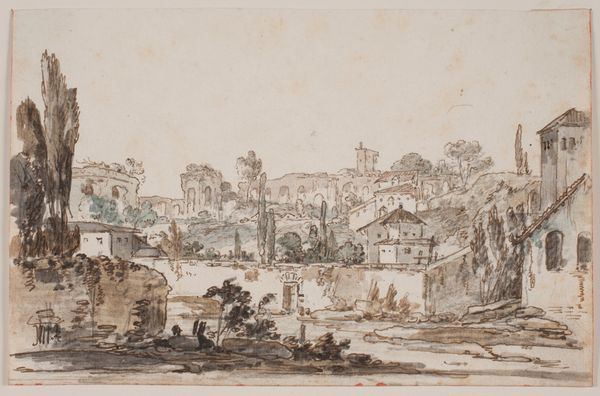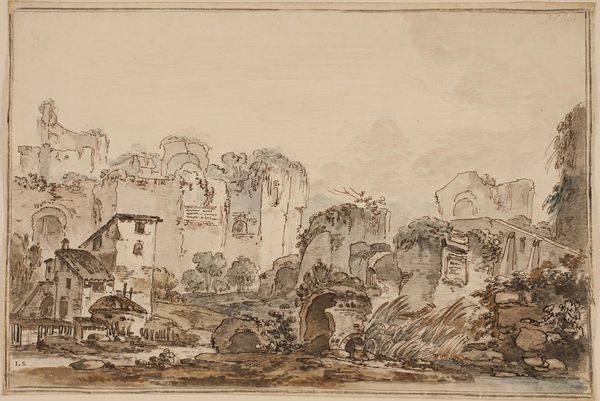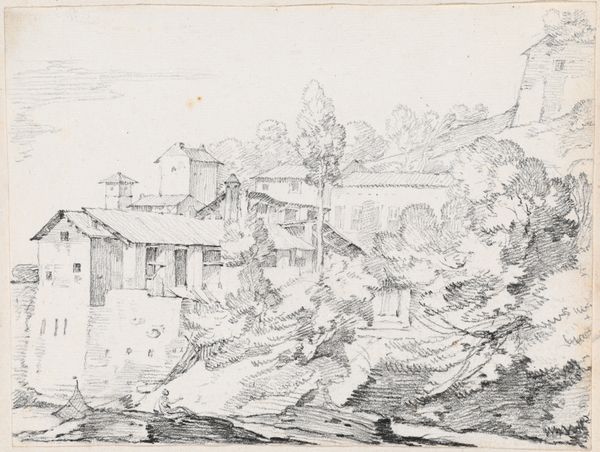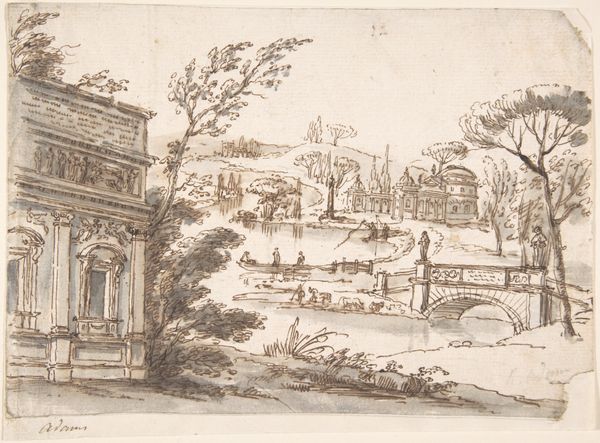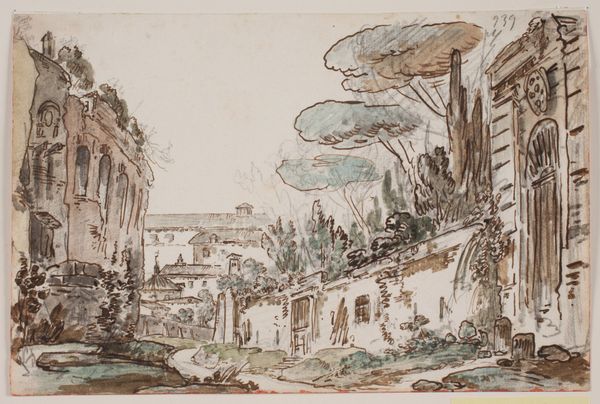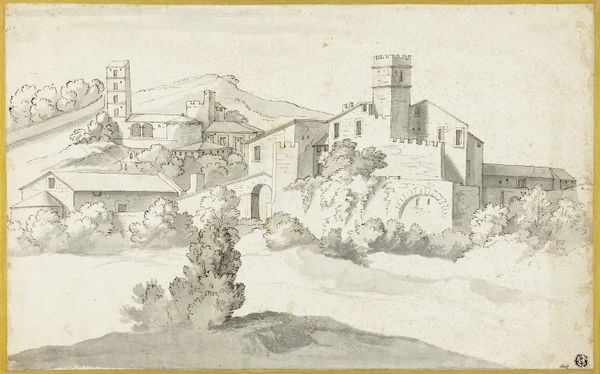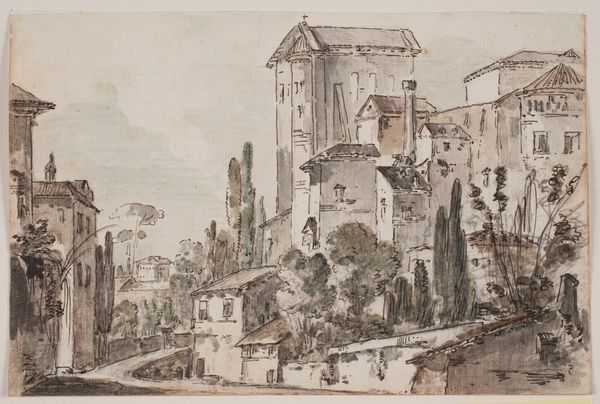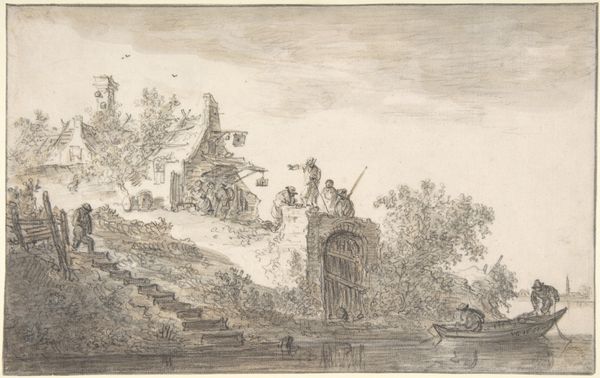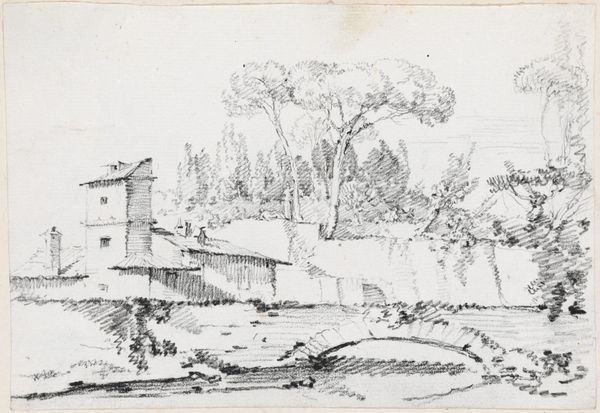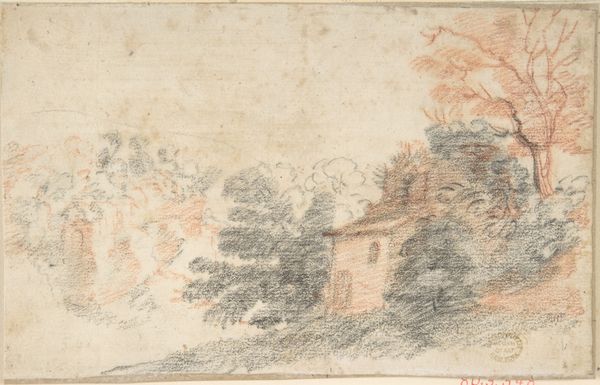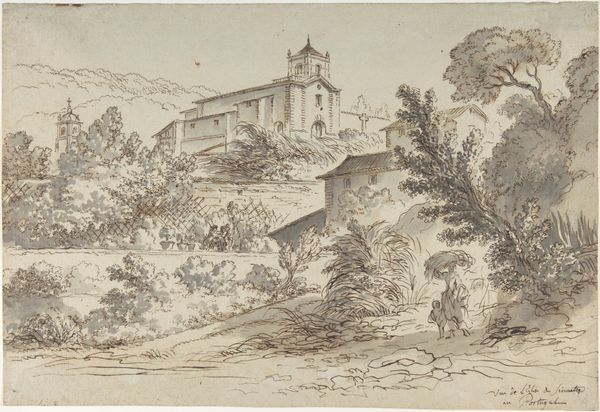
drawing, watercolor
#
drawing
#
landscape
#
etching
#
watercolor
#
cityscape
#
watercolor
Dimensions: 141 mm (height) x 211 mm (width) (bladmaal)
Editor: Here we have Jens Petersen Lund’s "Romersk" prospekt, likely created between 1730 and 1793, utilizing drawing and watercolor. The earthy tones give it a slightly faded, nostalgic feel, like looking at a cherished memory. What strikes you most about this piece? Curator: It's interesting to consider the social context of this "prospect" view. These weren't just aesthetic exercises; they were products tied to consumption and class. Lund is offering a romantic vision of Rome, readily accessible to those who could afford to collect such images. Editor: So, like a souvenir? Curator: In a sense, yes, but more than that. Look at the specific materials: paper, watercolor. How were these acquired? By whom were they produced? This informs our understanding of Lund's process. The widespread availability of paper during that time signals the democratization of art, albeit limited by social class. The means of production shape the work’s meaning. Editor: I see what you mean. The *act* of creating this, from the ground up, really influences how we view it. It’s not just a pretty picture. Curator: Exactly! This piece bridges the gap between ‘high art’ and ‘craft’. The labor involved in both creating the image and obtaining the materials connects it to the broader economic landscape of the time. Do you see the visible brushstrokes? Those aren't accidents; they are deliberate marks of production. Editor: I do now. It's easy to forget about the physical work that goes into these historical pieces, thinking of them as these untouchable relics. Thanks for pointing out all these production facets. Curator: It highlights the consumption aspect tied to cultural capital. Considering the social and material dimensions adds depth.
Comments
No comments
Be the first to comment and join the conversation on the ultimate creative platform.
